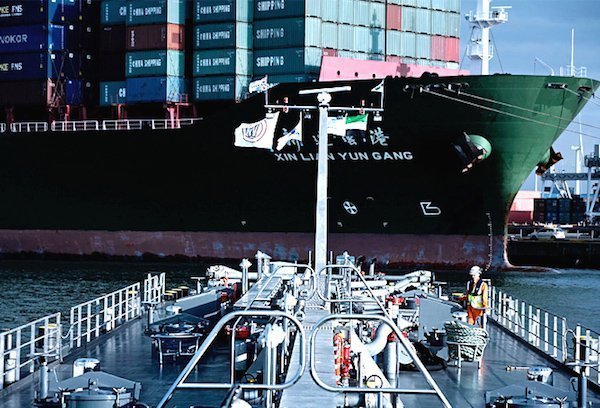Shipping has a ‘clear preference’ for a bunker fuel levy: Esben Poulsson

The chairman of the International Chamber of Shipping, Esben Poulsson, has set out what he believes the industry would like the International Maritime Organization (IMO) to achieve as part of its CO2 reduction strategy for the shipping sector.
Speaking in Indonesia today at The Economist magazine’s World Ocean Summit, Poulsson feared that unless IMO makes significant progress the industry could be vulnerable to regional action, not only from the EU – which is considering incorporating shipping into the EU Emissions Trading System – but also from Canada or California, which have already introduced carbon pricing.
“We are confident IMO can adopt an ambitious strategy by 2018 matching the spirit of the Paris Agreement. However, IMO needs to agree a baseline year for peak CO2 emissions from shipping, as well as setting out some serious long term aspirations for dramatically cutting the sector’s total CO2 by the middle of the century” Poulsson said.
ICS thinks IMO should adopt objectives for the entire sector, not for individual ships, in the same way that governments have already agreed CO2 commitments for their national economies under the Paris Agreement. IMO should also agree a mechanism for delivery which ICS would like to see in place by 2023. If IMO decides to develop a Market Based Measure, ICS claimed in a release today that the “clear preference” of the industry is for a bunker fuel levy.
Poulsson added that any IMO goals that are sufficiently ambitious to allow shipping to play its part in achieving the United Nations ‘2 degree’ climate change target should also be realistic.
“Ambitious CO2 reduction objectives will only be achievable with alternative marine fuels which do not yet exist, although we are very confident that they will be available in the not too distant future,” observed Poulsson.
